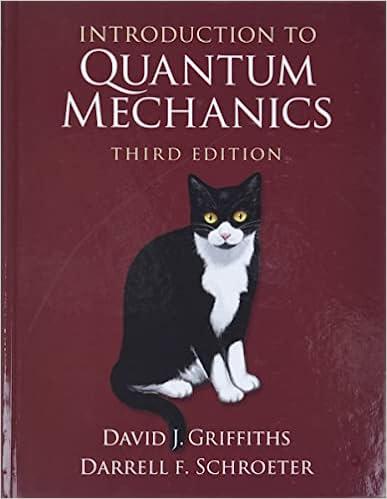Apply the techniques of this Section to the H and Li + ions (each has two
Question:
Apply the techniques of this Section to the H − and Li+ ions (each has two electrons, like helium, but nuclear charges and Z = 1 and Z = 3, respectively). Find the effective (partially shielded) nuclear charge, and determine the best upper bound on Egs, for each case. Comment: In the case of H − you should find that (H) > -13.6 eV, which would appear to indicate that there is no bound state at all, since it would be energetically favorable for one electron to fly off, leaving behind a neutral hydrogen atom. This is not entirely surprising, since the electrons are less strongly attracted to the nucleus than they are in helium, and the electron repulsion tends to break the atom apart. However, it turns out to be incorrect. With a more sophisticated trial wave function (see Problem 8.25) it can be shown that Egs < -13.6 eV, and hence that a bound state does exist. It’s only barely bound, however, and there are no excited bound states, so H − has no discrete spectrum (all transitions are to and from the continuum). As a result, it is difficult to study in the laboratory, although it exists in great abundance on the surface of the sun.
Step by Step Answer:

Introduction To Quantum Mechanics
ISBN: 9781107189638
3rd Edition
Authors: David J. Griffiths, Darrell F. Schroeter





